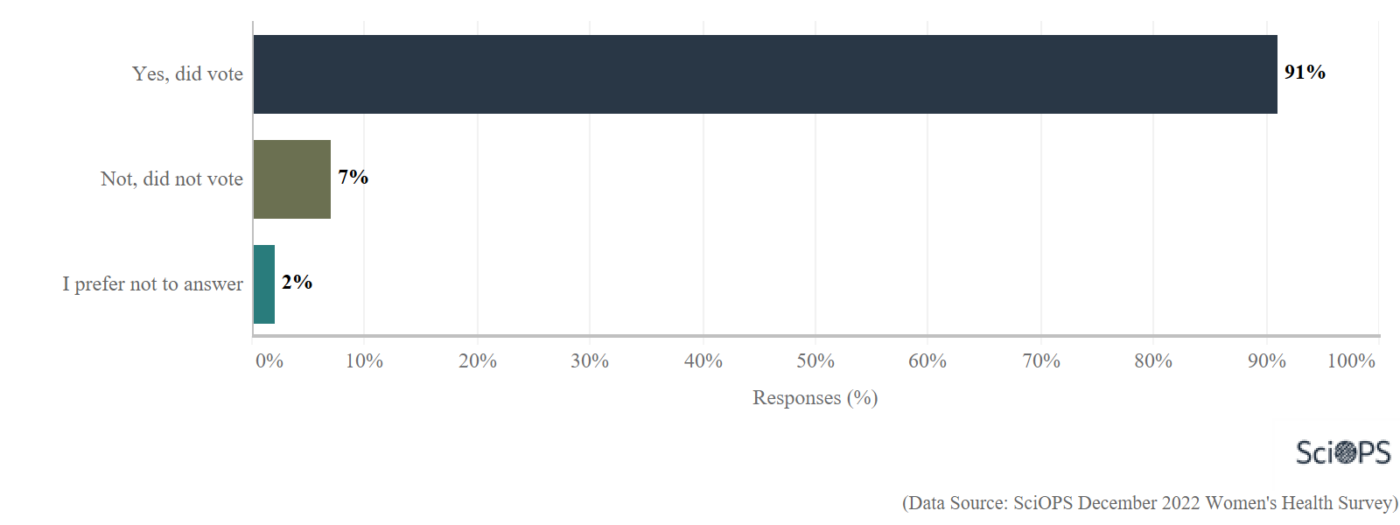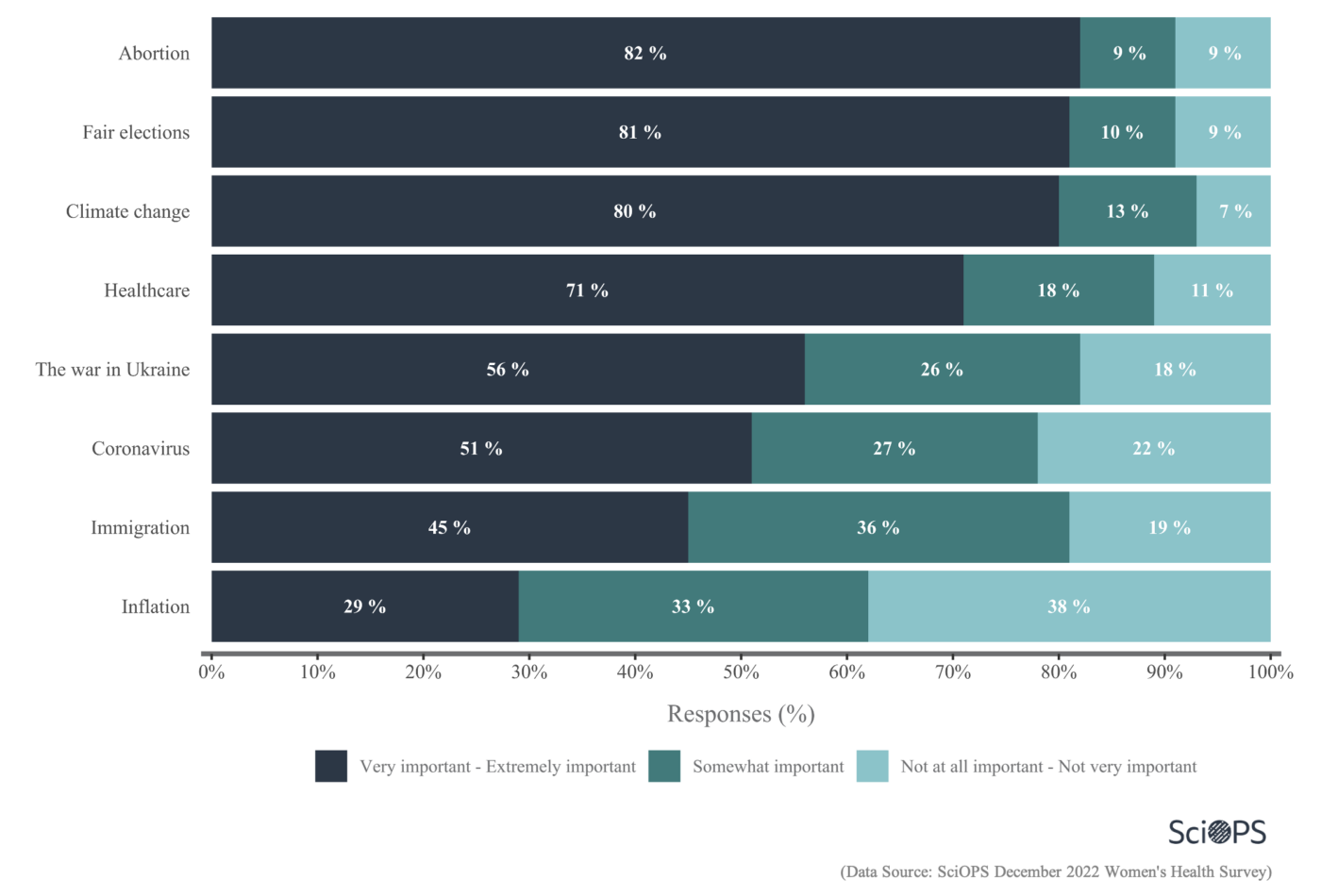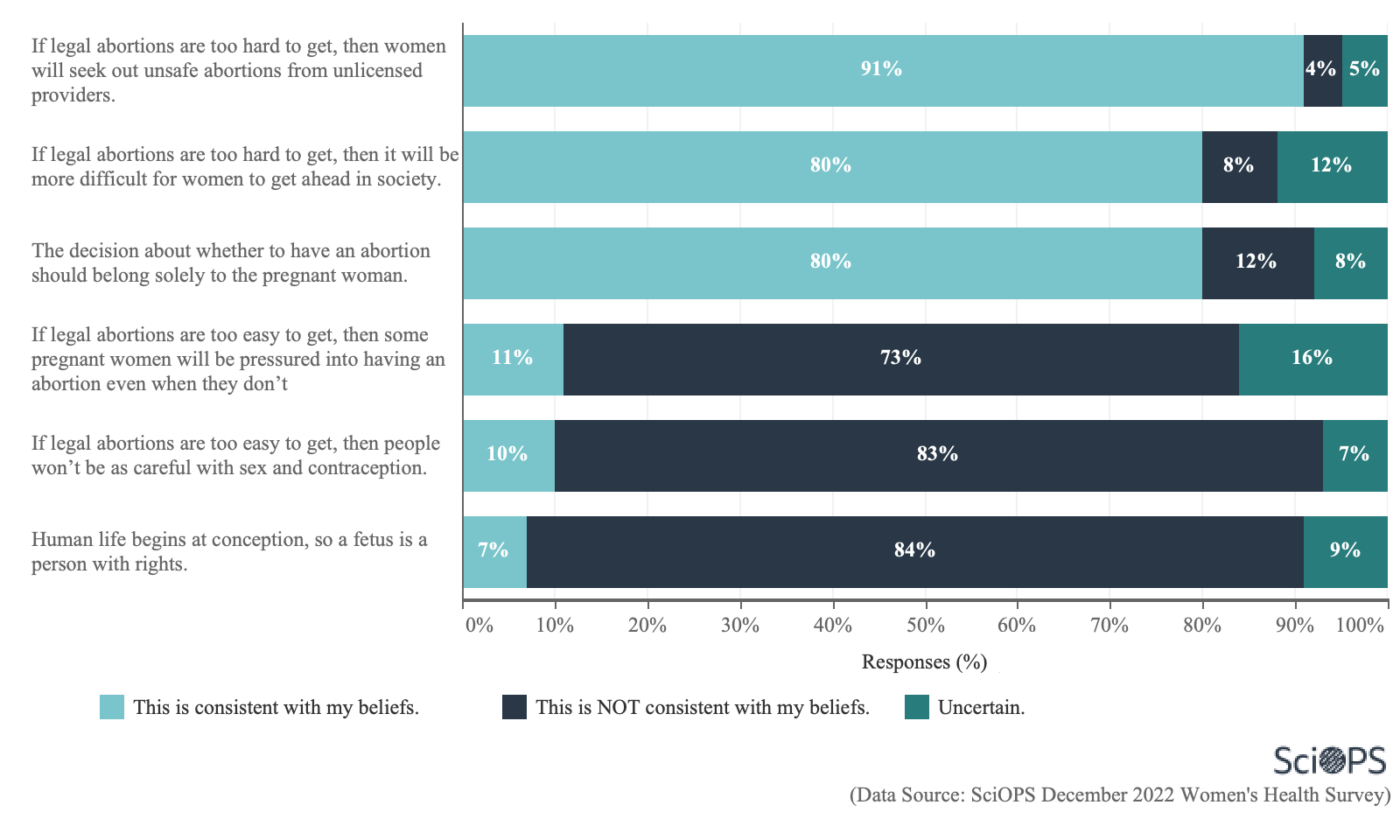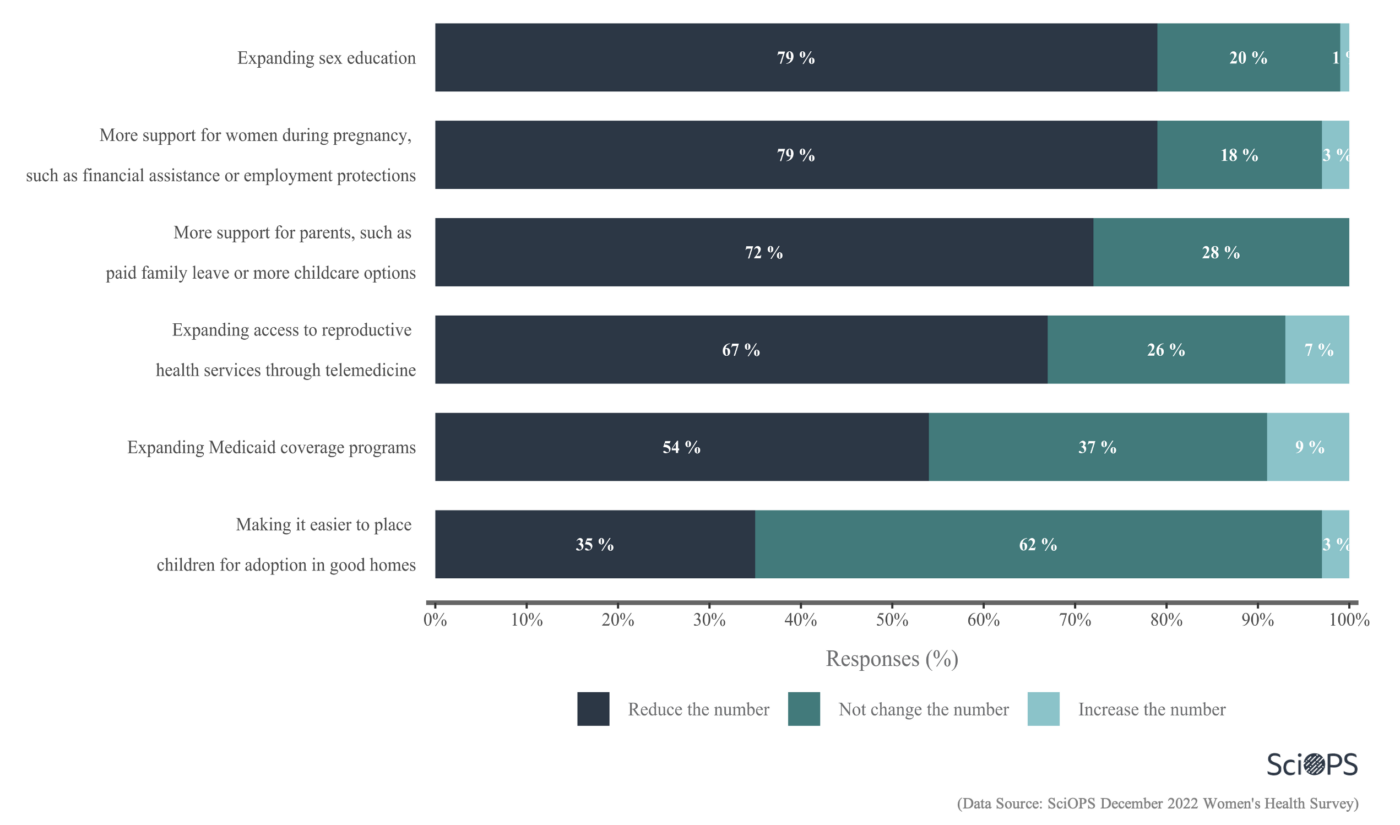Women's Health Survey: Scientists' Personal Views
The survey sample was weighted by gender and academic field to represent the population as closely as possible. The measure of sampling error for questions answered by the full sample is plus or minus 5 percentage points.
In this survey, we asked scientists a variety of questions about women’s reproductive healthcare. Topics included scientists’ personal views on abortion and access to healthcare. Other questions in the survey addressed university and state policy responses to the 2022 US Supreme Court Decision- Dobbs v. Jackson Women’s Health Organization.
Question

Finding
A majority of the respondents voted in the 2022 general election (91%).
Question

Finding
A majority (82%) of scientists surveyed responded that abortion was a very important or extremely important topic for voting decision in the 2022 midterm election.
Other very important or extremely important topics included: fair elections (81%), climate change (80%), and healthcare (71%)
Less than half of the scientists responded that immigration (45%) and coronavirus (29%) were extremely important or very important to them when they made their decision regarding which candidate they would vote for in the 2022 midterm election.
Question

Finding
The majority of scientists believe that if legal abortions are too hard to get, it will be more difficult for women to get ahead in society (80%) and women will seek out unsafe abortions from unlicensed providers (91%).
The majority of scientists (80%) reported that the statement “the decision about whether to have an abortion should belong solely to the pregnant woman” is consistent with their beliefs.
The majority of the scientists (84%) reported that the statement “Human life begins at conception, so a fetus is a person with rights” is not consistent with their beliefs.
Question

Finding
Expanding sex education (79%) and increasing the support for women during pregnancy (79%) are considered the two most effective ways of reducing the number of abortions in the U.S. However, when looking at response by gender, almost half of the male scientists (45%) believe expanding sex education would reduce the number of abortions in the US, compared to 26% of female scientists.
According to respondents, other methods of reducing the number of abortions include more support for parents (72%) and expanding access to telemedicine services (67%)
62% of the scientists reported that making it easier to place children for adoption in good homes would not have any impact on the number of abortions in the U.S.
Only 9% of the scientists responded that expanding Medicaid coverage programs would increase the number of abortions in the U.S.
This national survey on academic scientists in the US was conducted by the Center for Science, Technology and Environmental Policy Studies (CSTEPS) at Arizona State University. The survey was approved by Institutional Review Boards at Arizona State University.
The sample for this survey were randomly selected from our SciOPS panel. SciOPS panel is recruited from a random sample of PhD-level faculty in four fields of science. Contact information of faculty in four fields– biology and genetics, civil and environmental engineering, and geography –was collected from randomly selected Carnegie-designated Research Extensive and Intensive (R1) universities in the United States (US) and from all CEPH accredited public health schools. The full sample frame for recruiting SciOPS panel includes contact information for 11967 scientists. 986 eligible scientists consented to become SciOPS panel members, representing AAPOR recruitment rate (RECR) was 8.1%.
This national survey obtained a total of 149 usable responses, representing an AAPOR individual survey response rate (RR4) of 37.3% and an AAPOR Cumulative Response Rate (CUMRR) of 8.1%.
Sample Weighting and Precision: the completed sample was weighted by the inverse of selection probabilities and post-stratified by gender and academic field to represent the population as closely as possible. A conservative measure of sampling error for questions answered by the full sample is plus or minus 5 percentage points. The survey was approved by Institutional Review Boards at Arizona State University and at the University of Illinois at Chicago.
